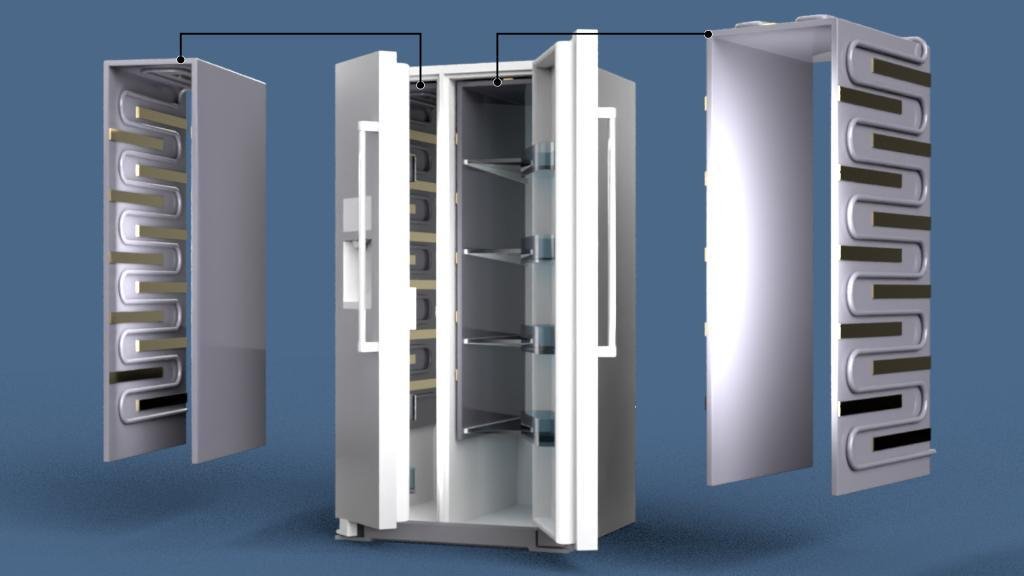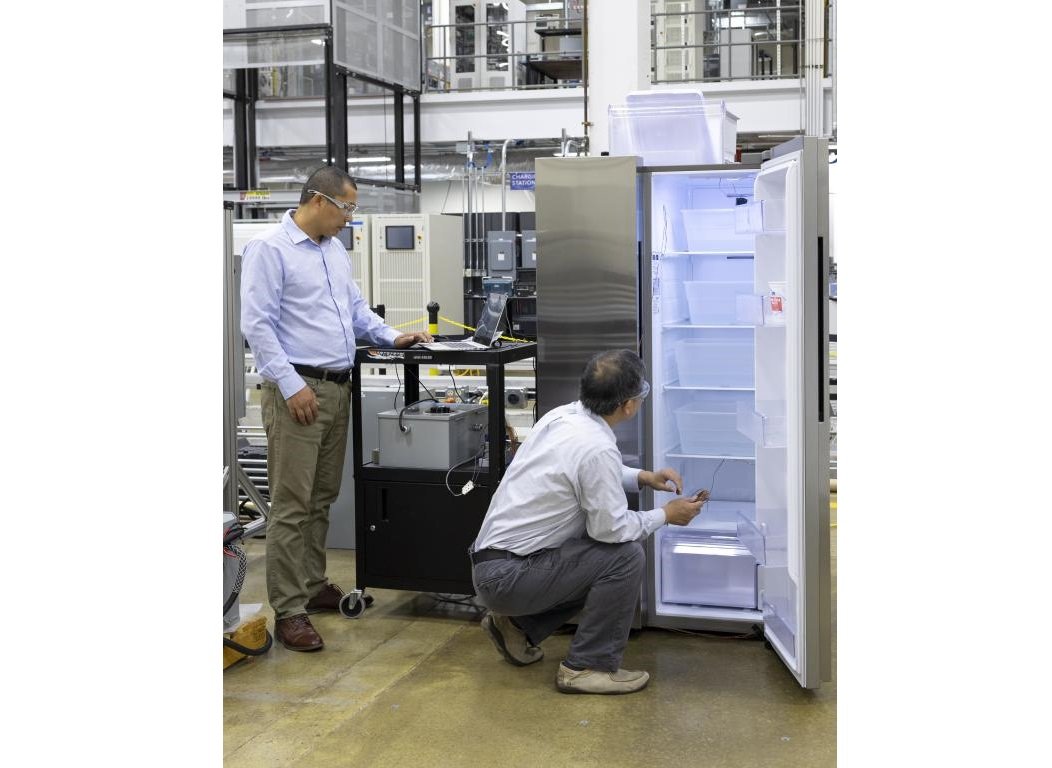A groundbreaking technology developed by Oak Ridge National Laboratory (ORNL) aims to revolutionize household refrigeration. By utilizing phase change materials (PCMs), this innovation not only keeps food and beverages refrigerated but also reduces carbon emissions by 30%.
Revolutionary Technology
The technology employs advanced evaporators with PCMs, metal foam for heat conduction enhancement, direct-contact defrosting technology, and a low global warming potential refrigerant. These elements work together to maintain temperature and performance while minimizing environmental impact.
“PCMs are integrated with evaporator coils to keep temperature constant, requiring one operating cycle and allowing refrigerators to operate almost 100% at nighttime, when energy use is lower,” explained Zhiming Gao from ORNL. “This reduces electricity demand, saves costs, and maintains efficiency.”
Testing and Implementation
ORNL researchers are actively testing this new household refrigeration technology. Unlike conventional refrigerators that cycle on and off throughout the day, this innovative system cycles once overnight, reducing the overall energy consumption and carbon footprint.
Energy and Environmental Impact
With over 100 million household refrigerators in the United States consuming up to 2 kilowatts of electricity daily, the current refrigeration systems contribute significantly to energy use and carbon emissions. The new ORNL technology, however, offers a sustainable alternative. By integrating PCMs for long-duration cold energy storage, the technology can achieve a 20% improvement in efficiency and shift almost 100% of the load from daytime to nighttime.
Replacing conventional refrigerators with this new technology could save up to 167 trillion BTU of primary energy consumption and reduce CO2 emissions by 7.2 million tons annually. This change supports the broader goal of achieving net-zero carbon emissions by 2050, while also fostering the creation of clean energy jobs.
Applications and Benefits
-
Sustainability: Achieves a 30% reduction in carbon dioxide emissions.
-
Efficiency: Reduces energy needs by over 20%.
-
Load Shifting: Shifts almost 100% of operation from daytime to nighttime, saving energy and costs.
-
Support for Net-Zero Goals: Contributes to the goal of net-zero carbon emissions by 2050.
Industries and Applications
This novel refrigeration technology has wide-ranging applications, including:
-
Residential and commercial refrigeration
-
Transportation refrigeration
The use of phase change materials in refrigeration represents a significant advancement in the field, providing a more efficient and environmentally friendly solution for preserving perishable goods.

